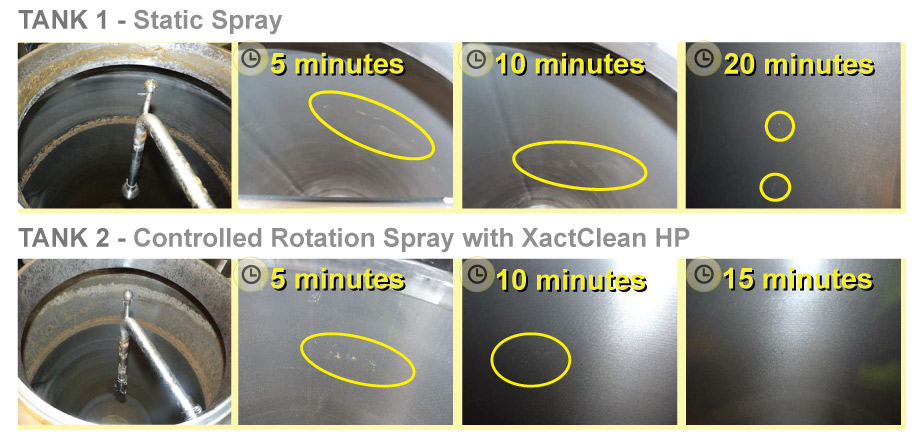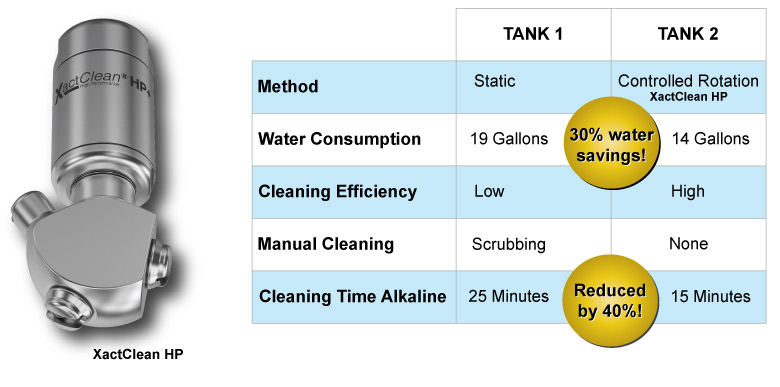
Reduce Solvent Consumption Challenges
Sourcing solvent and planning for proper discharge are the main concerns for Industrial manufacturers who use solvent for their processes. Plant design, operating conditions, environmental restrictions, and operating budgets, and other regulations must all be considered. Companies that consume large amounts of local solvent can lose their supply if they are seen as a risk to others.
Technological Improvements
Lechler is aware of these issues and has engineered solutions for solvent challenges that exist in tank cleaning applications. Our nozzle designs can help reduce solvent consumption, increase production cycles, improve cleaning efficiency and provide significant cost savings. Lechler offers a wide product offering of spray nozzles for tank cleaning because every application is unique.
Controlled Rotational Spray provides 30% more solvent savings
Traditional static spray balls provide a good rinse for most tank cleaning applications but when it comes to removing more difficult soils, these are not very efficient and can consume large amounts of solvent over a period of time. One method for reducing solvent consumption is using controlled rotational spray, where the rotating head is driven by the fluid. A turbine wheel with an internal gear is used to control the rotation. This ensures that the speed remains in the optimum range even at higher pressures. The droplets produced are larger and strike the tank wall at higher speeds with greater impact for removing difficult soils.
Proven Results with Controlled Rotational Spray
The XactClean HP and XactClean HP+ are both controlled rotational spray nozzles that Lechler offers. They provide uniform cleaning and are excellent choices that can help reduce solvent consumption.
Compare the Results
Application:
Lechler GmbH in cooperation with Munich University worked in collaboration with Germany to conduct a cleaning evaluation tank test between static spray and rotational spray. The test results were presented a the World Brewing Congress in 2016.
The initial test was setup in a pilot brewery using 2 fermentation and storage tanks. Each tank was filled with the same beer and the fermentation and storage time were the same. Above the filling level there was a sticky yeast residue on the tank surface., which you can see inside the perimeter of each tank.
The image below shows tank 1, a static spray nozzle was used as the cleaning mechanism and in tank 2, Lechler's XactClean HP rotational nozzle was used.
Process:
The image below depicts the amount of residue left during each CIP process. The initial step was a 15 second fresh solvent rinse, and then 2% alkaline was added. The process was stopped and checked every 5 minutes to evaluate the amount of residue left inside the tank.

Results:

This chart shows the overall conclusion of the test. In tank 1, not all of the yeast residue could be removed even after 25 minutes and the test was stopped. The tank required manual scrubbing to remove all the yeast residue left over. In tank 2, all of the yeast residue was removed in 15 minutes by the controlled rotational nozzle.
Still have questions? We can help!
Lechler's tank cleaning experts are here to help you with every step of the process.
